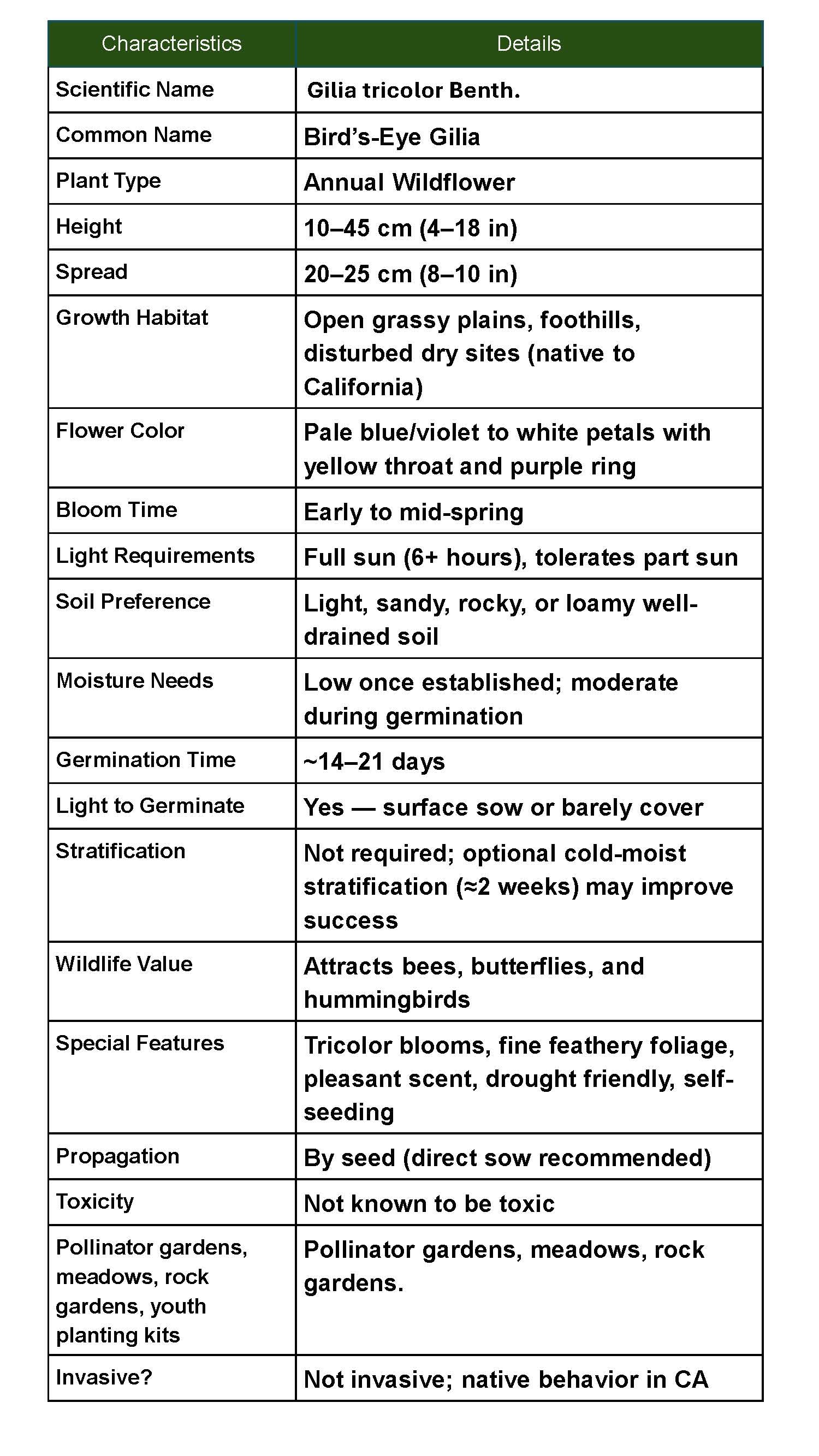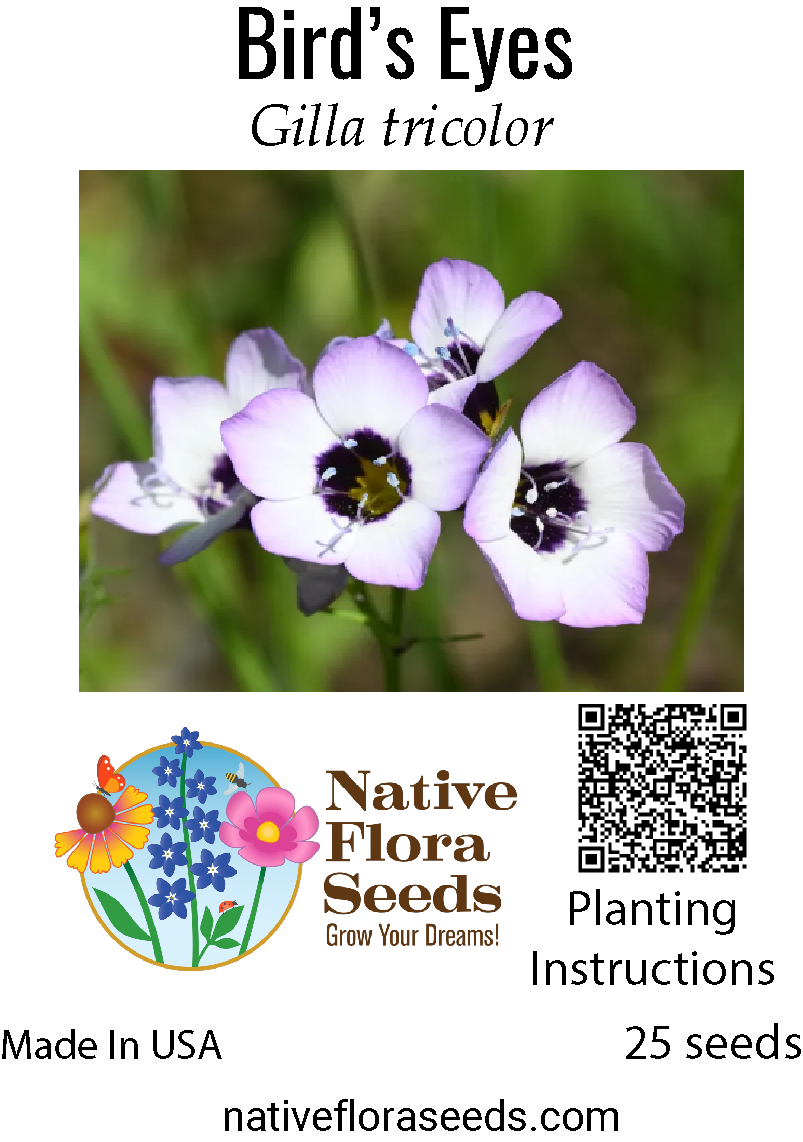Bird's Eyes (Gilia tricolor) - Native California Wildflower Seeds
Bring California's Natural Beauty to Your Garden
Gilia tricolor, commonly known as Bird's Eyes, is a stunning native California wildflower that creates a captivating display with its distinctive tricolored blooms. Each delicate flower showcases pale blue or violet petals, powder-blue stamens, a vibrant yellow throat, and a striking dark purple ring—a true masterpiece of nature.
Key Features:
- Distinctive tricolored flowers (½-inch blooms) in blue, violet, yellow, and purple
- Low-growing annual reaching 10–45 cm tall with 20–25 cm spread
- Delicate, feathery foliage forms attractive mounds
- Blooms in early to mid-spring
- Attracts bees, butterflies, and beneficial pollinators
- Drought-tolerant once established
Growing Conditions:
Native to California's Central Valley and Coast Ranges, Bird's Eyes thrives in full sun and well-drained, light soils. Perfect for rock gardens, native plantings, meadow gardens, and informal borders. This hardy wildflower adapts naturally to disturbed or dry soils and requires minimal maintenance once established.
Ideal For: Native plant gardens, pollinator gardens, xeriscaping, naturalized meadows, and California-themed landscapes.


